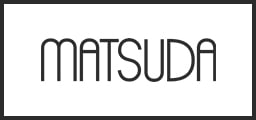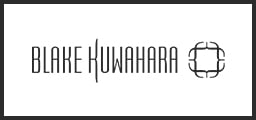It’s Never too Early for Eye Health
It’s never too early to focus on your children’s eye health and vision. Their sense of sight is essential in all stages of development. Early detection and correction of concerns like refractive errors (their “lens prescription”), focusing issues, and eye movement issues can help support proper visual system development. Should any of these conditions go undetected, it’s possible their visual system might not develop as expected, leading to permanently reduced vision or visual abilities for their lifetime, including amblyopia (lazy eye) and strabismus (a turned eye).
Parents must be aware that an infant will not complain of poor vision since:
- they do not know what constitutes “normal vision
- they are not verbal
If children do not have a comprehensive eye exam until they complain about symptoms, it may be too late to restore their vision or visual abilities. Even young children have been shown not to complain even if conditions significantly affect the quality of their vision.
Children might be nervous about having an eye exam, but all our team members, including our optometrists, have experience examining children and are ready to put them at ease. For us, it is important to give children a positive and comfortable impression of optometrists early in life so they feel comfortable coming for regular appointments.
If your child needs glasses, we offer a wide selection of colours and styles—helping them see clearly while putting a smile on their face.
Book their appointment today to set them up for success—and a lifetime of healthy vision.
Request Appointment
When Do Children Need Eye Exams?
We recommend scheduling your child’s first comprehensive eye exam around age one. If you notice any signs of vision problems, such as squinting, covering one eye, or difficulty tracking objects, please bring them in for an earlier evaluation.
After the initial exam, we typically recommend annual eye check-ups. However, more frequent exams may be necessary if your child has a specific eye condition or is experiencing vision difficulties.
Studies show that about 85% of children’s learning is visual, so any issues with visual functioning can impact their ability to learn effectively.
In Ontario, the Ontario Health Insurance Program (OHIP) covers many aspects of an annual comprehensive eye exam up to age 19.
Children’s Vision Issues & Stages of Sight
There are several vision conditions that develop in childhood and even some that are congenital but not easily detected by non-eye doctor health practitioners. Our skilled optometrists can diagnose and recommend treatment for a variety of children’s vision issues, including the following.
Myopia (Nearsightedness) – Poor Distance Vision
Myopia (nearsightedness) can be congenital or start in infancy and can progress, at times rapidly, over childhood and adolescence, particularly during “growth spurts.” High myopia could increase the risks of more serious conditions later on, and children with undiagnosed myopia may struggle in school.
If caught early, corrective eyewear can help them to develop proper vision and eye functioning. Research over the last decade now empowers optometrists to help slow or potentially halt myopia progression through innovative management strategies. These treatments can help manage prescription changes and, therefore, manage risks for high myopia-related diseases and eye conditions like glaucoma, macular degeneration, and retinal detachments. Children with early-onset myopia, as well as those with parents and other family members with high myopia, have a greater likelihood of developing high myopia.
Strabismus (Crossed Eyes)
Strabismus, a muscle condition commonly known as crossed eyes, occurs when the eyes are misaligned and do not look in the same direction. Strabismus can result in one eye turning in a different direction or, in some cases, a subtle misalignment called micro-strabismus, which parents or caregivers may not easily notice. Even minor misalignments can lead to poor vision and hinder binocular development. These issues can permanently affect vision and visual function if left undetected and untreated.
Strabismus does not improve on its own and requires correction from an optometrist.
Amblyopia (Lazy Eye)
Amblyopia, or lazy eye, is a condition where one eye has reduced vision that corrective lenses (like glasses or contacts) can’t fix.
It can happen for several reasons:
- There is a big prescription difference between the eyes.
- Your child has or is developing strabismus (crossed eyes).
- Something is blocking one eye from seeing clearly, like a congenital cataract.
- There’s a high level of farsightedness in both eyes.
Most of these conditions, except noticeable strabismus, often go unnoticed. Without correction before age 3 or 4, these issues may lead to permanent vision problems because the brain’s visual centre cannot interpret what your child sees between the ages of 0 and 5. If this centre doesn’t learn to interpret clear images during that time, it won’t be able to “see clearly” even if treatment starts later with corrective lenses.
Amblyopia is one of the most preventable causes of vision loss, but early detection is key—ideally before age 5.
Treatment often involves patching the stronger eye to encourage the brain to connect with the weaker one, which, if started before age 3 or 4, may help resolve the condition.
Convergence Insufficiency
When blurry or double vision is present, convergence insufficiency may be the reason. Convergence insufficiency occurs when the eyes do not align and don’t work together while looking at nearby objects or up-close work.
An eye exam is imperative to detect convergence insufficiency, as it occasionally presents without visual cues.
Stages of Sight
There are many milestones in a baby’s visual progression. Here’s what to expect at some important stages:
- Birth to 1 Month: Your baby should be staring at bright lights or faces, albeit for a short time.
- 1 to 3 Months: They’ll begin to look toward sounds and follow objects horizontally.
- 3 to 5 Months: Babies begin to reach for objects and see differences between colours.
- 5 to 7 Months: Hand-eye coordination will begin to develop and your baby should start looking at distant objects.
- 7 to 12 Months: Depth perception, focusing, and other visual skills should be developed, and your baby might begin to copy facial expressions they see.
As children get older, you can help encourage their healthy visual development by playing look-and-find games like Where’s Waldo?, doing word searches and maze games together, and limiting their screen time.
To monitor your child’s visual development at the appropriate pace, be sure to bring them in for comprehensive eye exams as well.
How Do I Know If My Child Needs Glasses?
If they are experiencing a vision issue, children are often unable to articulate the problem—they might not even know there is a problem. Unlike adults, children have not established a baseline of what proper vision looks like for them.
Bringing your child for regular eye exams can help establish that baseline. We can help detect any vision problems early on. Book their appointment today!
Request AppointmentOur Location
We are located in Toronto’s Yorkville neighbourhood in the second building just east of Avenue Road. Look for the “151” sign on the building right above the doors, which may be easier to see from the North side of the street
For more detailed location information and parking assistance, please click here.
For video instructions from subway exits and parking, please click here.
*We are closed on statutory holidays.

Our Address
- 151 Bloor St W, Suite 703
- Toronto, ON M5S 1S4
Contact Information
- Phone: 416-923-8439
- Email: appointments@vieweyecare.com
Hours of Operation
- Monday: 8:00 AM – 6:00 PM
- Tuesday: 8:00 AM – 6:00 PM
- Wednesday: 8:00 AM – 6:00 PM
- Thursday: 8:00 AM – 6:00 PM
- Friday: 8:00 AM – 4:00 PM
- Saturday: Closed
- Sunday: Closed
Our Services
Our Brands

























